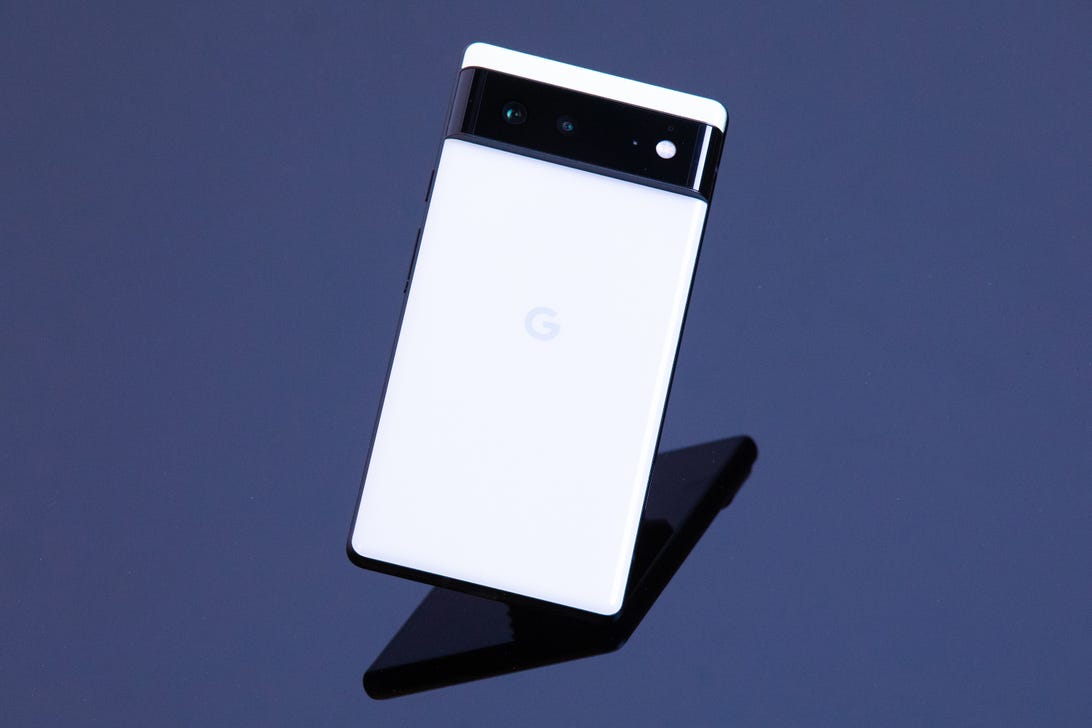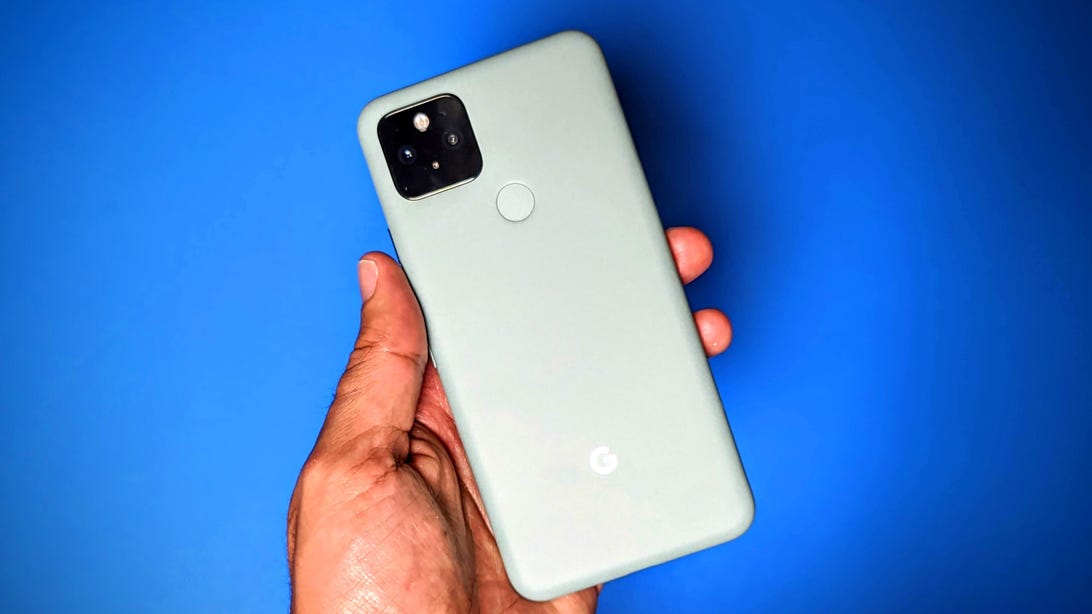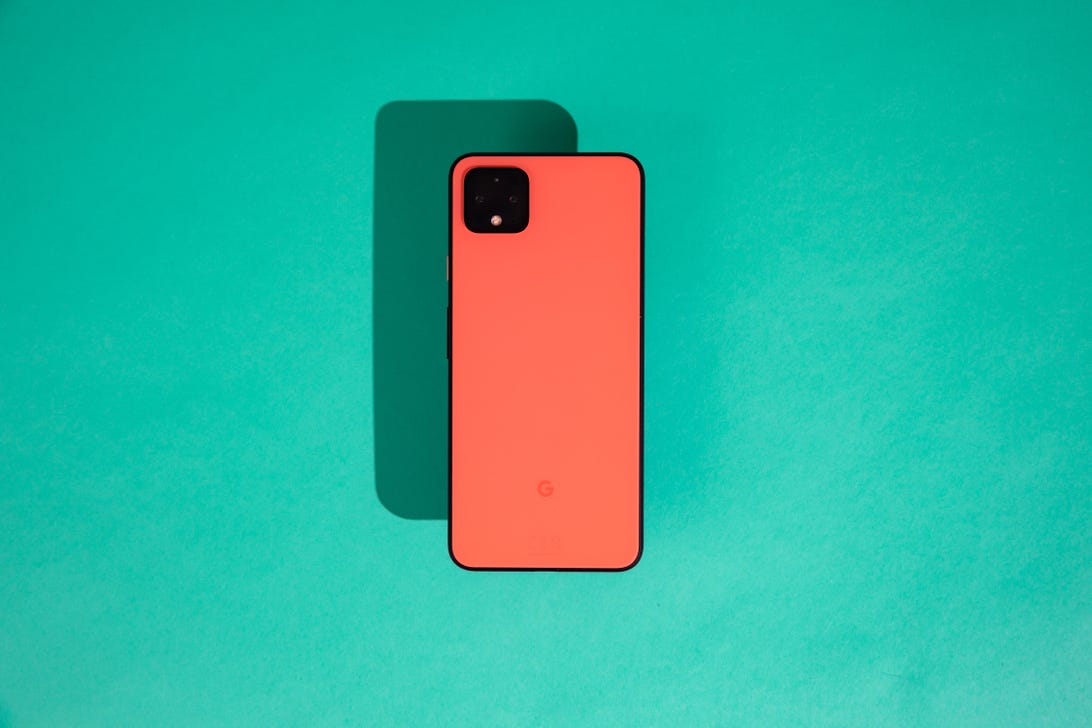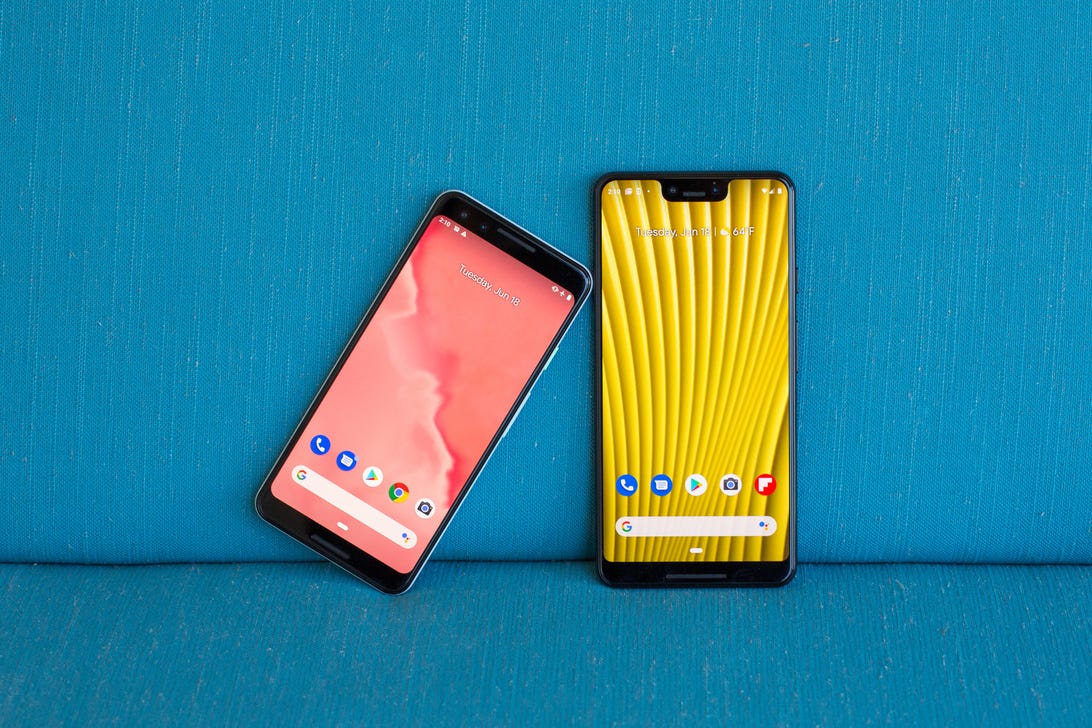
James Martin/CNET
The Pixel 6 is Google’s biggest smartphone upgrade in years. But it can still be difficult to know whether it’s time to upgrade. In general, you should only consider upgrading if your phone is more than two years old. Even though there’s plenty that’s different about the Pixel 6, the Pixel 5 is still new enough to get you through at least another year. But if you have an older phone that’s not eligible for Android operating system updates anymore — like the Pixel 3 — it’s time to think about getting a new phone.
While the Pixel 6 was impressive enough to earn a CNET Editors’ Choice Award, it’s also worth remembering there are probably other options coming soon for Pixel fans. Google is expected to announce the more affordable Pixel 6A shortly, while it typically releases its next-generation Pixel phones in the fall.
You’ll also want to consider what you’re sacrificing when upgrading. Owners of certain older Pixel phones get unlimited photo storage via the Google Photos app at “Storage saver” quality, which preserves most detail while compressing the file size. But this perk isn’t available on newer phones like the Pixel 5A and Pixel 6 family. It’s also important to consider that Google regularly launches software updates with new features that are compatible with older phones, too, so you don’t always have to buy a new phone to get additional functionality.
We’ve focused on the main Pixel series in this story instead of its less expensive Pixel A phones. Since Google usually launches its A-series phones after its flagship Pixels, these devices usually have a longer lifespan when it comes to software support, meaning you can hold onto them for longer before upgrading.
If you’re interested in branching out from the Pixel lineup, check out our guide to the best Android phones. And if you are upgrading to a new device, consider recycling your old phone or trading it in.

Juan Garzon/CNET
Post Contents
Google Pixel 6 vs. Pixel 5
Year-over-year upgrades are usually minor in today’s smartphone landscape, but the Pixel 6 is the rare exception to this rule. With the Pixel 6, you’re getting Google’s own Tensor processor for the first time, an upgraded camera with extra features, a more elegant design and other refinements that make it feel vastly different from the Pixel 5. But since the Pixel 5 is less than two years old, you probably don’t need to upgrade just yet.
The biggest change in the Pixel 6 is the addition of Google’s Tensor processor. General performance is smooth, but Google’s chip really shines when it comes to camera features and other machine learning-oriented tasks. The Pixel 6’s camera is loaded with new tools you won’t get on the Pixel 5, such as Magic Eraser for deleting unwanted background items; Face Unblur, which keeps a subject’s face sharp even when they’re moving; and Motion Mode for adding blurred background or long exposure effects to an image.
Aside from the extra functionality, the Pixel 6 also has a 50-megapixel main camera with a wider field of view than the Pixel 5’s, although the ultrawide camera has a lower resolution than last year’s phone (12 megapixels on the Pixel 6 versus 16 megapixels on the Pixel 5).
Google also says the Pixel 6 should have longer battery life than the Pixel 5, since it claims the new phone’s battery can last “beyond 24 hours” while referring to the Pixel 5 as having “all-day” battery life. But battery life will always vary depending on how you use your device. Both phones were capable of making it through a full day during CNET’s review testing, but factors like screen brightness and which apps you’re using will always play a role.
The Pixel 6 also has a new glass design with a two-tone color scheme that looks classier than the Pixel 5’s, although that might not matter much if you plan to use it with a case. The more significant update is the Pixel 6’s larger 6.4-inch screen, which represents a sizable jump from the Pixel 5’s 6-inch display. Both phones can boost their refresh rates up to 90Hz for smoother scrolling and have similar resolutions, but the Pixel 6’s screen is covered in more durable Gorilla Glass Victus.
The bottom line: Even though there’s a lot that’s new with the Pixel 6, you probably don’t need to upgrade just yet. The Pixel 6’s extra camera features and other improvements are appreciated, but likely aren’t worth a $600 upgrade for most people. Aside from its fresh look, bigger screen and new camera, a lot of the Pixel 6’s changes are mostly moderate upgrades. Google will continue providing the Pixel 5 with Android operating system and security updates through October 2023. So if you’re happy with your current Pixel 5, you’re better off holding onto it for another year to get the most out of it before upgrading.

Andrew Hoyle/CNET
Google Pixel 6 vs. Pixel 4 and 4 XL
When it comes to the Pixel 4 and 4 XL, the question of whether you should upgrade isn’t so straightforward. If your phone is still in good condition, you can probably afford to hold onto it for a little longer. But you might want to consider upgrading in the fall since the Pixel 4 and 4 XL are only guaranteed to get Android operating system and security updates until October 2022.
Even if you’ve decided you’re ready for a new phone, you should still wait until later this year if you can. Google is expected to release two new phones this year: the Pixel 6A and the Pixel 7. The Pixel 6A is rumored to launch this spring and is expected to be a less expensive version of the Pixel 6. The Pixel 7 will likely debut in the fall and would be the successor to the Pixel 6.
Which one you should wait for depends on your budget and priorities. Google’s A-series phones are typically cheaper (the Pixel 5A starts at $450) but compromise on certain features. If Google keeps the same pricing as last year, the Pixel 7 will start at $600 just like the Pixel 6.
But if you are set on upgrading now, there’s plenty that’s new with the Pixel 6. The most visibly obvious change is in the phone’s design. The Pixel 6 has a two-tone glass back with a nearly borderless screen and a horizontal camera bar, while the Pixel 4 has a solid colored back. Since the newest Pixel phone doesn’t have any bezels above or below the screen, Google was able to extend the display’s size without making the phone bigger. As such, the Pixel 6 has a roomier 6.4-inch screen compared to the Pixel 4’s 5.7-inch display and the Pixel 4 XL’s 6.3-inch screen.
The Pixel 6 also supports 5G unlike the Pixel 4 and 4 XL. That might not feel like a huge deal today, but it’s important for a phone that you’re planning to keep for the next two to three years.
Google also gave the Pixel 6’s internals a major upgrade by using its own Tensor chip instead of a Qualcomm mobile processor. Once again, you’ll notice this most in the camera, since it brings extra features like Magic Eraser and Face Unblur. But considering the Pixel 4 is now more than two years old, you’ll likely notice a nice boost in overall speed and responsiveness, too.
The camera on the Pixel 6 also has a noticeably higher 50-megapixel resolution with a wider field of view than the Pixel 4 and 4XL’s 12.2-megapixel main camera. The other main camera difference comes down to the second lens. The Pixel 6 has an ultrawide camera while the Pixel 4 and Pixel 4 XL each have a telephoto camera. If you take a lot of zoomed-in photos on your Pixel 4, you’ll want to be aware of that change.
Google also did away with its Motion Sense feature after the Pixel 4, but that’s probably not a huge loss. Motion Sense lets you perform actions like playing or pausing music, skipping songs or snoozing alarms just by waving your hand without touching the phone. Although Motion Sense was responsive in our testing, CNET’s reviewer Lynn La also said it “felt gimmicky at first.”
You’ll also notice an improvement in battery life when switching to the Pixel 6. Google’s newest phone typically lasts for a full day on a single charge, according to CNET’s review, while the Pixel 4 only lasted for about a workday when CNET tested it in 2019. Those are the biggest differences, but there are also a few other benefits, such as more storage at the base level (128GB on the Pixel 6 vs. the Pixel 4’s 64GB), extra RAM for better performance (8GB instead of 6GB) and an in-screen fingerprint sensor (the Pixel 4 only has face unlock). The Pixel 6 also has Battery Share, which makes it possible to charge other devices like earbuds wirelessly.
The bottom line: With a sharper main camera, new photography features, a bigger screen, longer battery life and Google’s Tensor processor, there’s certainly a lot to gain by switching from the Pixel 4 to the Pixel 6. But you also don’t have to upgrade right away if your phone is in good condition.
However, the Pixel 4 and 4 XL are only guaranteed to receive Android version and security updates until this October. Your phone will still work after that date, but you’ll likely want to upgrade to a newer device before then.

Angela Lang/CNET
Google Pixel 6 vs. Pixel 3 and 3 XL
If you have a Pixel 3 or earlier, it’s time to upgrade since Google no longer guarantees Android version and security updates. The Pixel 3 and 3 XL are more than three years old, meaning they’re also probably starting to feel a bit slow.
Although software support is probably the most important reason to upgrade, the Pixel 6 brings many other new features and functionality. Unlike the Pixel 6, the Pixel 3 and 3 XL don’t support 5G. You might not care about that very much right now, but you probably will over the next two years or so.
The Pixel 6’s screen is significantly larger than the Pixel 3’s (6.4 inches versus 5.5 inches) and slightly bigger than the Pixel 3 XL’s 6.3-inch display. The borders surrounding the Pixel 6’s screen are also noticeably smaller than those on the Pixel 3 and 3 XL, giving Google’s newest phone a sleeker and more modern overall appearance.
Performance and battery life will also get a big boost thanks to Google’s Tensor chip and the Pixel 6’s larger battery capacity. Even though the Pixel 3’s battery fared pretty well during our initial test in 2018, your phone’s battery life is probably starting to shorten now that the device is a couple of years old. Aside from the speed boost you’ll likely get from Google’s new Tensor processor, the Pixel 6’s 90Hz refresh rate should also make scrolling feel smoother.
But one of the biggest areas you’ll notice an improvement is in the camera. Not only does the Pixel 6 have a sharper 50-megapixel main camera compared to the Pixel 3’s 12.2-megapixel camera, but it also has an additional 12-megapixel ultra wide camera for taking broader shots. The Pixel 6’s improved camera sensor and Google Tensor processor also mean there are a ton of extra photography features on the Pixel 6 that you won’t get on the Pixel 3. These include Magic Eraser for deleting unwanted background objects, Face Unblur for capturing sharp images even when the subject is moving and portrait light effects among other tools.
Those are the main benefits you’ll get from upgrading to the Pixel 6, but there are several other differences, too. The Pixel 6 has an in-screen fingerprint reader instead of the Pixel 3’s rear-mounted sensor and double the memory for better performance. It also has reverse wireless charging, which enables the back of the device to serve as a wireless charger for compatible accessories.
The bottom line: Since Google is no longer guaranteeing Android version and security updates for the Pixel 3 and 3 XL, you’ll want to upgrade soon. Aside from the peace of mind that comes with knowing you’ll continue to get new features and security fixes, you’ll get a slew of other improvements ranging from longer battery life to a more sophisticated camera and larger screen.
Google Pixel 6 vs. Pixel 3, 4 and 5
| Google Pixel 6 | Google Pixel 5 | Google Pixel 4 | Google Pixel 3 | |
|---|---|---|---|---|
| Display size, resolution | 6.4-inch OLED; 2,400×1,080 pixels; 60 or 90Hz | 6-inch FHD+ OLED; 2,340×1,080 pixels; 60 or 90Hz | 5.7-inch OLED; 2,280×1,080 pixels | 5.5-inch OLED; 2,160×1,080 pixels |
| Pixel density | 411ppi | 432ppi | 444ppi | 443ppi |
| Dimensions (Inches) | 6.2 x 2.9 x 0.4 in | 5.7 x 2.8 x 0.3 in | 2.7 x 5.7 x 0.3 in | 5.7×2.7×0.3 in |
| Dimensions (Millimeters) | 158.6 x 74.8 x 8.9 mm | 144.7 x 70.4 x 8.0 mm | 68.8 x 147.1 x 8.2 mm | 145.6×68.2×7.9 mm |
| Weight (Ounces, Grams) | 7.3 oz; 207g | 5.33 oz; 151g | 5.7 oz; 162g | 5.2oz; 148g |
| Mobile software (at launch) | Android 12 | Android 11 | Android 10 | Android 9 |
| Camera | 50-megapixel (wide), 12-megapixel ultrawide | 12.2-megapixel (standard), 16-megapixel (ultrawide) | 12.2-megapixel (standard), 16-megapixel (telephoto) | 12.2-megapixel |
| Front-facing camera | 8-megapixel | 8-megapixel | 8-megapixel | 8-megapixel |
| Video capture | 4K 60fps (rear), 1080p 30fps (front) | 4K 60fps (rear), 1080p 30fps (front) | 4K 30fps (rear); 1080p 30fps (front) | 4K 30fps (rear), 1080p 30fps (front) |
| Processor | Google Tensor | Qualcomm Snapdragon 765G | Qualcomm Snapdragon 855 | Qualcomm Snapdragon 845 |
| RAM/Storage | 8GB/128GB or 256GB | 8GB/128GB | 6GB/64GB or 128GB | 4GB/64GB or 128GB |
| Expandable storage | No | No | No | No |
| Battery/Charger | 4,614 mAh | 4,080 mAh | 2,800 mAh | 2,915 mAh |
| Fingerprint sensor | Under display | Rear | No | Rear |
| Connector | USB-C | USB-C | USB-C | USB-C |
| Headphone jack | No | No | No | No |
| Special features | 5G sub 6 (some carrier models also have 5G mmWave) support, Wi-Fi 6E, 30W fast charging, Magic Eraser, Motion mode, Real Tone, Face Unblur, Cinematic Pan, 5 years OS and security updates, IP68 rating for dust and water resistance, Gorrila Glass Victus (front), Gorilla Glass 6 (back) | 5G enabled; water resistant (IP68); 90Hz refresh rate display; dual-SIM capabilities (nano-SIM and e-SIM); reverse wireless charging; fast charging | Soli motion sensing and touchless gestures; 90Hz display; water resistant (IP68); dual-SIM capabilities (nano-SIM and e-SIM); wireless charging | IP68 rating, wireless charging support, Pixel Buds USB-C headphones in the box |